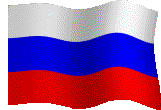|
DiscoveryGate is the foremost search engine for scientists in chemistry and related fields! In contrast to other people that use Google, a chemist needs to search by structures and reactions, and a scientist needs to search by data. DiscoveryGate is the foremost search engines for scientific data. The power of data searches is not recognized by every scientist. Only DiscoveryGate makes it easy to search by data. What can DiscoveryGate do for you?
For a tour and more information please visit www.discoverygate.com.
|
Symyx’s
DiscoveryGate also provides information related to drug discovery. “Say you
start from a chemical reaction library to synthesize a compound,” Dr. Uli
Heigl from Symyx (MDL) explains, “while browsing a reaction library, you
may get metabolite information and commercial availability and probably
information on bioactivity, physicochemical data.” He adds, “DiscoveryGate
really gives you access to all of the different data —including patents,
journal articles, and synthetic methodologies.”
from Life Science Technologies: Combinatorial and Computational Chemistry – Creating New Therapeutic Compounds by Mike May and Gary Heebner, 17 March 2006 issue of Science.
|
MDL’s DiscoveryGate is the result of two
demands by our customers:
Asking to search over ALL resources is pretty
tough, especially if one considers that bioinformatics databases are today
part of the spectrum. Even for this MDL has an answer, but this is beyond
DiscoveryGate. DiscoveryGate concentrates on small molecules, ca. 12 million,
and reactions. This is the largest resource of chemical
information and includes 500 million observed properties. On the left side of the screenshot you see the databases that can be searched in DiscoveryGate. The MDL Compound Index is a normalized database containing all structures of the above databases, and in addition the structures from
DiscoveryGate searches over all chemical information in databases (secondary literature), links to journals (primary literature), and offers a reaction classification search to major reference works (tertiary literature). Access to in-house databases can be accomplished, but this is not part of the standard Internet application. Access to Chemical Abstract Service (CAS) was prohibited by CAS. This is understandable because DiscoveryGate is a competition to SciFinder. However, the scope of DiscoveryGate is much wider, because it offers much more factual data. Download a pdf file comparing SCiFinder and DiscoveryGate. |
Using DiscoveryGate® in medicinal chemistry and cancer
research
"Reseachers can eliminate
undesirable leads early in the lead generation process by quickly
accessing information on pharmacological effects, side effects and
drug-drug interactions for compounds or compound classes of interest, as
well as their corresponding metabolites."-Dr. Guido Kurz, CNIO
Centro Nacional de Investigaciones Oncologicas (Spanish National Cancer
Research Center). |
|
University of Wisconsin supports DiscoveryGate® content platform for North American academic consortia Minerva Host to offer full technical support to consortium members licensing DiscoveryGate SAN RAMON, CA – November 29, 2006 – Symyx (MDL) is pleased to announce that the University of Wisconsin will provide full technical support to all members of the North American MINERVA consortium that license either the full DiscoveryGate® content platform or the Beilstein and/or Gmelin databases using the DiscoveryGate platform. The University of Wisconsin currently hosts the MINERVA and MENTOR programs that provide students, faculty and researchers at over 100 North American universities with unlimited access to their respective licensed databases, including CrossFire Beilstein, Crossfire Gmelin and MDL® ISIS chemical sourcing, bioactivity and synthetic methodology databases. “The University of Wisconsin is pleased to expand our role with the academic, scientific research and library communities by supporting DiscoveryGate from Symyx (MDL),” said Nolan Pope, Associate Director for Technology, General Library System, UW-Madison. “Extending technical and user support to the DiscoveryGate platform enables the growing number of North American universities to benefit from this important chemistry and life science resource.” DiscoveryGate serves tens of thousands of eligible users at more than 400 commercial, academic and government institutions worldwide and is supported on both the Microsoft Windows® and Apple Macintosh® OS X platforms. Because DiscoveryGate is widely deployed in the commercial research environment, hands-on experience with DiscoveryGate in the university setting will prepare students for success in today’s highly competitive job market. DiscoveryGate’s unique integration and linking of content enables researchers to compare information and results that are not available through other systems. With the indexing of important new data sources this year (e.g., PharmaPendium™ drug safety resource, PubChem® database, GeneGo systems biology/pathway analysis platform, etc.), DiscoveryGate now provides detailed scientific information on more than 22 million chemical compounds, 11 million reactions and 500 million observed chemical facts, including synthesis, bioactivity, metabolism, toxicology, physical property, chemical sourcing, pharmacology and patent data—all from a single query. Researchers can access 17 databases including the Beilstein and Gmelin databases (which are also available on the CrossFire system from MDL Information Systems GmbH), MDL® Available Chemicals Directory, MDL® Drug Data Report, MDL® Toxicity Database and authoritative reference works on synthetic methodology. Researchers can also search compounds in PubChem and the Derwent World Patents Index®, and they can link to over 20,000 journal titles (with additional licenses required to access certain third-party content). “Researchers at more than 20 academic institutions in North America including Stanford, Harvard and the University of Chicago are currently using the DiscoveryGate platform to answer research questions—and more are expected by the end of the year,” said Symyx (MDL) President and CEO Lars Barfod. “Symyx (MDL) appreciates the University of Wisconsin’s support of the growing DiscoveryGate community in North America.” DiscoveryGate for academia features a campus-wide access model. When an institution licenses DiscoveryGate, any number of eligible researchers at the institution may use the service—access is not limited to a few people at a time. To learn more about how DiscoveryGate helps academic researchers find the information they need, visit www.discoverygate.com, contact your Symyx (MDL) Account Manager or request information at www.mdl.com.
|
Download a discoverygate datasheet in Russian or
|
| GZ |

